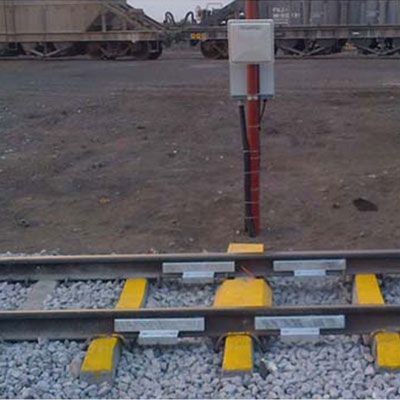Massize In-Motion Weighbridges from HMA Materials Handling provide automatic, high-speed operation and Trade Metrology-grade accuracy. Various approved models are available, catering for speeds of up to 60 kph.
Our retrofit technology means that the weighbridge is built into the existing track and no rail cutting or sleeper replacement is required. This technology also provides scalability, allowing for increased accuracy and operational speed. Installation is rapid and can be carried out safely between trains, meaning full occupation is not required.
The new T-Series weighbridges are microprocessor-based systems that are highly stable and operate fully automatically, without the need for user input. Multiple output options are available, including emailed reports or local printouts. Various communication options are also available, including Ethernet, GPRS/3G/LTE and serial (RS-232). The T-Series models are also capable of direct process integration via Ethernet and serial interfaces via an API.
The low-power microprocessor-based systems represent the next generation of in-motion weighbridge technology, providing identical performance on a much smaller, more efficient footprint. The microprocessor runs dedicated firmware, meaning that an operating system is not required. Also, the industrial design provides a much wider operating temperature range, doing away with the need for air-conditioned enclosures. Finally, being solid state, the T-Series system has no moving parts such as hard drives or fans, thus reducing the maintenance requirement and increasing the reliability.
Automatic Vehicle Identification (AVI) is supported and compatible with ATA, AAR and Gen-II type tags. AVI integration permits automatic payload calculation via vehicle ID matching. In addition to the AVI support, Dynamass weighbridges have options for four digital inputs and four digital outputs to interface to any peripheral trackside equipment that may be necessary.
Massize In-Motion Weighbridges from HMA Materials Handling produce the following fields for each weighed train:
- Date and time of weighing
- Direction of travel
- Total train mass
- Total locomotive mass
- Total wagon mass
For each vehicle, the following fields are produced:
- Vehicle number in train
- Vehicle type (locomotive, wagon)
- Speed
- Vehicle identification number (from RFID tag)
- Vehicle mass
- Mass distribution (left/right and front/back)
- Individual axle masses
- Individual wheel masses
An automatic tare calculation function utilises either RFID information or rules based on train movements to produce:
- Vehicle tare mass
- Vehicle net mass
- Train tare mass
- Train net mass

